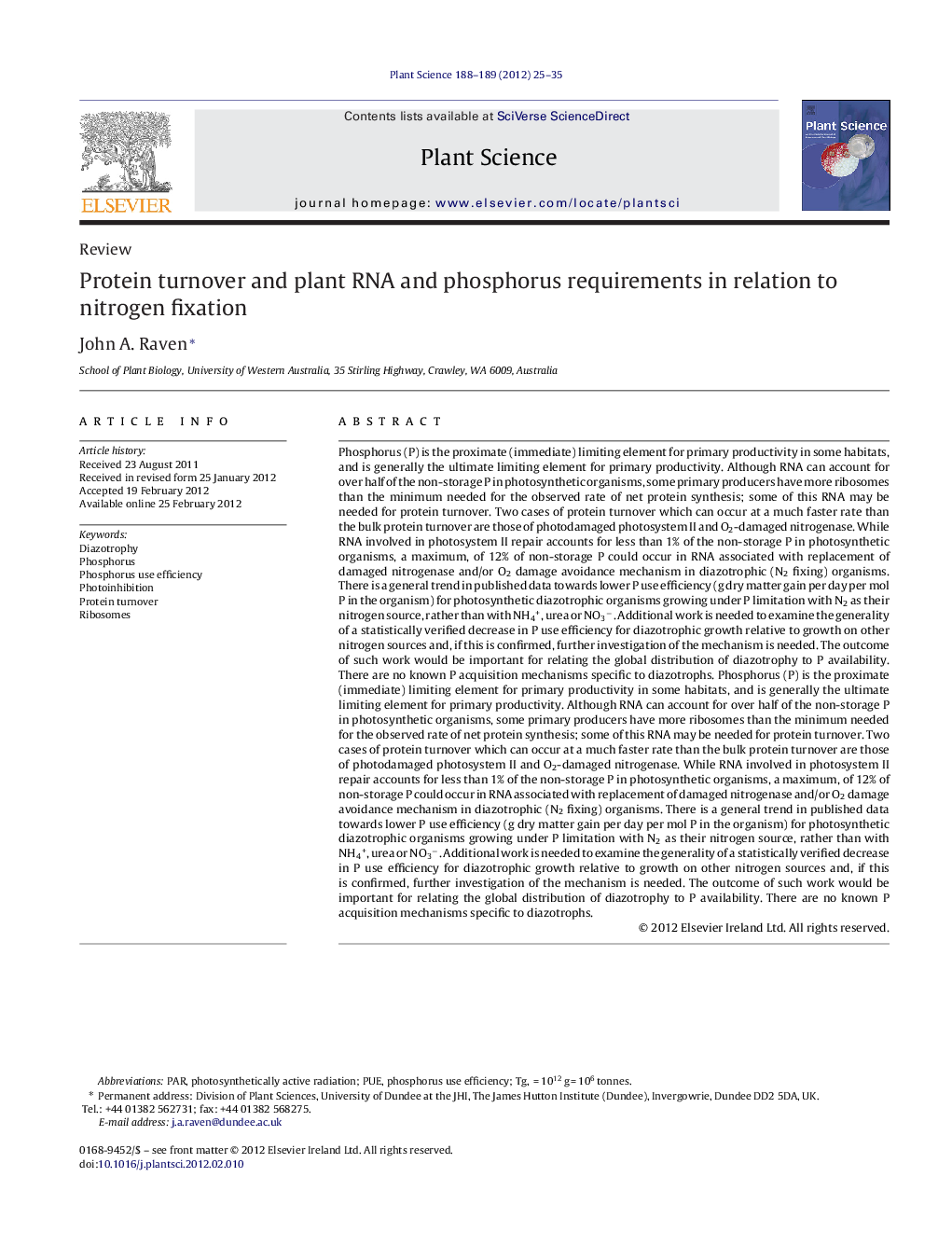| Article ID | Journal | Published Year | Pages | File Type |
|---|---|---|---|---|
| 2017366 | Plant Science | 2012 | 11 Pages |
Phosphorus (P) is the proximate (immediate) limiting element for primary productivity in some habitats, and is generally the ultimate limiting element for primary productivity. Although RNA can account for over half of the non-storage P in photosynthetic organisms, some primary producers have more ribosomes than the minimum needed for the observed rate of net protein synthesis; some of this RNA may be needed for protein turnover. Two cases of protein turnover which can occur at a much faster rate than the bulk protein turnover are those of photodamaged photosystem II and O2-damaged nitrogenase. While RNA involved in photosystem II repair accounts for less than 1% of the non-storage P in photosynthetic organisms, a maximum, of 12% of non-storage P could occur in RNA associated with replacement of damaged nitrogenase and/or O2 damage avoidance mechanism in diazotrophic (N2 fixing) organisms. There is a general trend in published data towards lower P use efficiency (g dry matter gain per day per mol P in the organism) for photosynthetic diazotrophic organisms growing under P limitation with N2 as their nitrogen source, rather than with NH4+, urea or NO3−. Additional work is needed to examine the generality of a statistically verified decrease in P use efficiency for diazotrophic growth relative to growth on other nitrogen sources and, if this is confirmed, further investigation of the mechanism is needed. The outcome of such work would be important for relating the global distribution of diazotrophy to P availability. There are no known P acquisition mechanisms specific to diazotrophs. Phosphorus (P) is the proximate (immediate) limiting element for primary productivity in some habitats, and is generally the ultimate limiting element for primary productivity. Although RNA can account for over half of the non-storage P in photosynthetic organisms, some primary producers have more ribosomes than the minimum needed for the observed rate of net protein synthesis; some of this RNA may be needed for protein turnover. Two cases of protein turnover which can occur at a much faster rate than the bulk protein turnover are those of photodamaged photosystem II and O2-damaged nitrogenase. While RNA involved in photosystem II repair accounts for less than 1% of the non-storage P in photosynthetic organisms, a maximum, of 12% of non-storage P could occur in RNA associated with replacement of damaged nitrogenase and/or O2 damage avoidance mechanism in diazotrophic (N2 fixing) organisms. There is a general trend in published data towards lower P use efficiency (g dry matter gain per day per mol P in the organism) for photosynthetic diazotrophic organisms growing under P limitation with N2 as their nitrogen source, rather than with NH4+, urea or NO3−. Additional work is needed to examine the generality of a statistically verified decrease in P use efficiency for diazotrophic growth relative to growth on other nitrogen sources and, if this is confirmed, further investigation of the mechanism is needed. The outcome of such work would be important for relating the global distribution of diazotrophy to P availability. There are no known P acquisition mechanisms specific to diazotrophs.
► Phosphorus can limit primary productivity in nature. ► Diazotrophic growth is particularly sensitive to phosphorus limitation. ► Ribosomes contain up to half of cell phosphorus. ► Additional ribosomes may be needed for resynthesis of oxygen-damaged nitrogenase.
